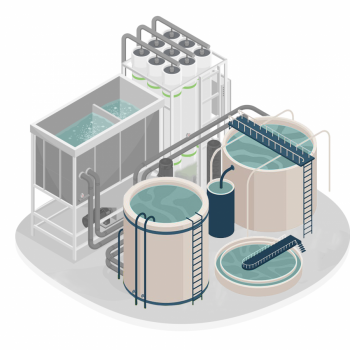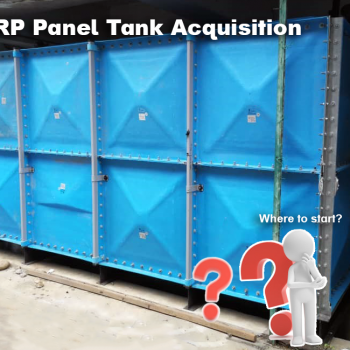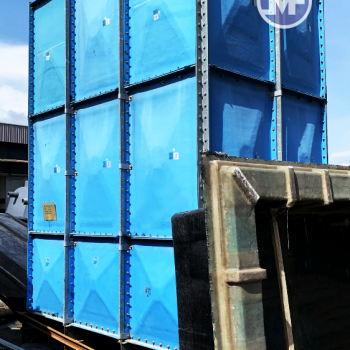Explore the advantages of upgrading to Mui Fatt Marketing's FRP composite level indicator for your water tank. Learn about its durability, easy installation, and customization options.
Future of Floating Solar Panels
08 Apr 2024
Floating Solar Panel: Understanding Advantages & Trends
Floating Solar Panel: Understanding Advantages & Trends
- Key Takeaways
- Understanding Floating Solar Panels
- Advantages of Floating Solar Panels
- Economic Benefits
- Environmental Impact
- Disadvantages of Floating Solar Panels
- Largest Floating Solar Facilities
- Emerging Trends in Floating Solar Technology
- Future of Floating Solar Panels
- Summary
- Frequently Asked Questions
Are you curious about the future of renewable energy? Imagine harnessing the power of the sun not just on land but also on water. Floating solar panels, also known as floating photovoltaic (FPV) systems or floating solar farms, are making waves as a sustainable energy solution. Their potential to contribute significantly to a greener tomorrow is undeniable. How do these innovative structures play a crucial role in shaping a more sustainable future for generations to come? Let's dive into the world of floating solar panels and explore their impact on our journey towards a cleaner and more eco-friendly planet.
Key Takeaways
- Consider Floating Solar Panels: Explore the benefits of floating solar panels for renewable energy generation.
- Economic and Environmental Benefits: Save costs and reduce environmental impact by opting for floating solar panels over traditional land-based systems.
- Addressing Disadvantages: Mitigate the drawbacks of floating solar panels by implementing suitable solutions.
- Learn from Successful Projects: Study the largest floating solar facilities to understand their impact and potential.
- Stay Updated on Technological Advances: Keep abreast of emerging trends in floating solar technology for more efficient and sustainable solutions.
- Embrace the Future: Embrace the promising future of floating solar panels as a key player in the renewable energy landscape.
Understanding Floating Solar Panels
Floating solar panels, also known as floating photovoltaics (FPV) or floatovoltaics, represent an innovative approach to harnessing solar energy on water bodies. These solar modules are mounted on platforms that float on various water surfaces such as reservoirs, lakes, and ponds to capture sunlight for electricity production efficiently.
The benefits of floating solar panels are multifold. They contribute significantly to water conservation by reducing evaporation from the water bodies they cover. Moreover, they facilitate the generation of clean energy, thereby aiding in the reduction of carbon emissions. Utilizing water surfaces for solar energy generation optimizes space usage and opens up new possibilities for power generation in areas with limited land availability.
Floating solar panels work by capitalizing on the vast expanse of water surfaces to maximize solar energy generation. The concept revolves around placing solar modules atop platforms that float on water bodies, enabling efficient electricity production through exposure to ample sunlight while also helping to maintain the quality of the underlying water source. This innovative approach plays a crucial role in advancing renewable energy projects and promoting sustainable practices.
Key Components
The essential components of a floating solar panel system include the solar modules themselves, floating platforms, anchoring systems, inverters, electrical connections, cable housing, walking paths, and handrails. Each component plays a vital role in ensuring the smooth functioning of the floating photovoltaic system. The unique features of these components are tailored to withstand the challenges posed by installation on water bodies while maximizing energy output.
Installation Process
Installing floating solar panels involves a meticulous step-by-step process that considers factors such as location suitability, anchoring mechanisms, and maintenance requirements. Challenges may arise during installation due to varying water depths, weather conditions, and environmental considerations. Specialized equipment and techniques are employed to secure the panels in place effectively while optimizing their performance over time.
Did you know that there are some amazing floating solar panels out there? These solar panels are renowned for their innovative design and impressive functionality. Let me tell you about a few of the most popular ones:
- Huainan Solar Farm in China: One of the largest floating solar plants in the world.
- Yamakura Dam Floating Solar Plant in Japan: Known for its innovative use of floating solar panels.
- Queen Elizabeth II Reservoir in the UK: A notable floating photovoltaic plant on a reservoir.
- Tengeh Reservoir in Singapore: Features a large-scale floating solar project.
- Sirindhorn Dam in Thailand: Houses a significant floating solar array on its surface.
Advantages of Floating Solar Panels
Space Efficiency
Floating solar panels optimize space by utilizing water surfaces for energy generation, reducing land usage. This method offers up to 15% enhanced efficiency compared to traditional ground-mounted systems. The utilization of water bodies for solar installations provides a significant advantage in terms of space efficiency, enabling higher energy production.
Discussing the advantages of space-efficient solar installations over land-based systems reveals the potential for increased energy output. By harnessing sunlight over water surfaces, floating photovoltaics offer an innovative approach to maximizing clean energy generation capacity. The World Bank's estimation of over 4,000 GW technical capacity showcases the vast potential floating solar panels hold in enhancing energy generation efficiency.
Enhanced Efficiency; Albedo Effect
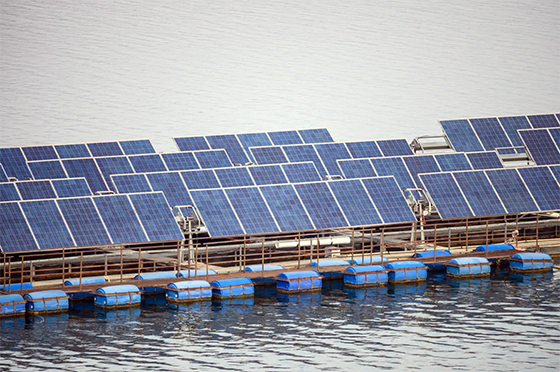 Floating solar panels play a crucial role in enhancing efficiency in clean energy generation by utilizing water surfaces for installation. These projects have enormous potential in maximizing solar energy generation capacity while minimizing emissions and conserving space. Research supports the increased efficiency of floating solar panels, emphasizing their ability to harness sunlight multiple times throughout the day.
Floating solar panels play a crucial role in enhancing efficiency in clean energy generation by utilizing water surfaces for installation. These projects have enormous potential in maximizing solar energy generation capacity while minimizing emissions and conserving space. Research supports the increased efficiency of floating solar panels, emphasizing their ability to harness sunlight multiple times throughout the day.
The albedo effect refers to how sunlight reflection off water surfaces impacts the efficiency of solar panels. Strategies to maximize energy output by considering this effect are crucial for optimizing floating solar panel performance. Kuala Lumpur-based utility TNB's initiative with a 30 MW (AC) floating PV plant demonstrates practical applications leveraging the albedo effect for efficient power generation.
Water Conservation
Floating solar panels contribute significantly to water conservation efforts by reducing evaporation and maintaining water quality. The shading effect of these panels helps preserve aquatic ecosystems and supports local communities like Sayreville, New Jersey, in keeping their water clean. Combining solar energy generation with water conservation not only benefits the environment but also promotes sustainability in power production.
Reduced Algae Growth
Floating photovoltaic systems aid in controlling algae growth in water bodies by mitigating factors that promote proliferation. Through mechanisms that prevent excessive sunlight penetration into the water, floatovoltaics help maintain balanced aquatic ecosystems. The environmental benefits of controlling algae growth through solar panel installations highlight the multifaceted advantages of utilizing floating solar technology.
Economic Benefits
Floating solar panels offer significant advantages in terms of economic benefits. By utilizing water surfaces for installation, these panels reduce land costs and open up new opportunities for solar power generation. This thermoregulatory advantage can potentially boost the efficiency of solar panels by up to 15%, leading to higher energy output and better return on investment. As a result, floating solar projects have the potential to revolutionize the market for renewable energy, increasing clean energy production and reducing reliance on fossil fuels.
The development of floating solar panel projects has a positive impact on the environment by promoting clean energy and reducing harmful emissions. By harnessing the power of the sun over water bodies, these installations contribute to a more sustainable future by minimizing carbon footprints. Floating solar panels hold enormous potential in providing electricity to remote areas where traditional power plants face challenges in accessibility and operation. This innovative approach not only enhances energy access but also supports efforts towards a greener and more efficient power generation system.
Reduced Installation Costs
Floating solar panels offer cost-effective installation solutions compared to land-based systems. The utilization of water surfaces eliminates the need for expensive land acquisition, reducing overall project costs significantly. Factors such as simplified mounting structures and easier maintenance contribute to the affordability of floatovoltaics. Choosing floating solar panel technology provides financial advantages while ensuring efficient utilization of resources for sustainable energy production.
- Lower land costs
- Simplified mounting structures
- Easier maintenance requirements
Enhanced Security
Security features integrated into floating solar panel systems play a crucial role in preventing theft and vandalism. Maintaining security considerations is essential for safeguarding investments in renewable energy infrastructure and ensuring uninterrupted clean power generation. Measures that ensure the stability and protection of floatovoltaic installations include:
- Surveillance systems
- Anti-theft devices
- Secure anchoring mechanisms
Durability Factors
Floating solar panels are designed with durability features to withstand harsh environmental conditions effectively. The materials used and specific design elements enhance the longevity of floatovoltaics against weather-related challenges. Rigorous testing ensures resilience against environmental stressors, resulting in lower Light Induced Degradation (LID) due to reduced oxygen and carbon content.
- Resilient materials
- Robust design elements
- Rigorous testing processes
Environmental Impact
Power generation through floating solar panels significantly reduces carbon emissions and promotes clean energy. These panels efficiently harness sunlight over water bodies, contributing to renewable energy production.
The potential of floating solar panels in water conservation is immense. They play a crucial role in maintaining water quality and reducing evaporation, benefiting aquatic ecosystems and supporting sustainable development.
One of the key advantages of floating solar panels is their ability to generate electricity while also providing shade to reduce water evaporation. This dual functionality enhances the overall efficiency of water usage.
Challenges related to the development of floating solar power plants include addressing issues with irrigation systems and ensuring sustainable power generation for the future. Overcoming these challenges is essential for long-term environmental benefits.
Low Impact on Aquatic Life
Floating solar panels are designed to minimize their impact on aquatic ecosystems, ensuring minimal disruption to marine life and habitats. This design approach prioritizes environmental sustainability.
Measures taken during the implementation of floatovoltaic projects focus on protecting marine life and preserving water quality. These initiatives aim to maintain a delicate balance between energy production and ecosystem conservation.
Sustainable practices adopted in floatovoltaic projects ensure the coexistence of floating solar panels and aquatic habitats, promoting biodiversity conservation and ecosystem resilience.
Ecosystem Benefits
Floating solar panels offer various positive effects on surrounding ecosystems by providing shade, reducing evaporation, and supporting biodiversity. These benefits contribute to ecosystem restoration efforts.
Floatovoltaics can play a significant role in conserving biodiversity by creating artificial habitats for aquatic organisms. This innovative approach enhances ecological diversity within water bodies where these installations are deployed.
The ecosystem services provided by floating solar panel installations include enhanced water quality, reduced algae growth, and improved habitat conditions for fish and other aquatic species.
Disadvantages of Floating Solar Panels
Environmentalists express concerns about the impact of floating solar panels on aquatic ecosystems and wildlife. The disruption caused by these installations could have far-reaching consequences for the delicate balance of water environments.
To accommodate environmental concerns, scientists and engineers are trying hard to make sure that floating solar panels can help the environment without causing harm to the animals and plants living in the water, as discussed in the above context.
Maintaining and repairing floating solar panels can be more complex than traditional land-based systems. Accessibility and logistics pose challenges due to the location of water bodies, requiring specialized equipment and expertise. The shading effect of water can reduce the efficiency of solar energy generation on floating panels.
Limited Applicability
- In regions with extreme weather conditions such as frequent storms or hurricanes, floating solar panels may not be suitable due to their vulnerability.
- Certain water bodies with high levels of turbulence or waves may not provide a stable environment for the installation and operation of floatovoltaic systems.
- Factors like depth restrictions, water quality requirements, and proximity to shorelines can limit the widespread adoption of floating solar panel technology.
Maintenance Requirements
Regular maintenance is essential to ensure optimal performance and longevity of floating solar panels. Tasks include cleaning debris from the surface, checking for any damage or malfunctions, and ensuring proper anchoring to prevent drifting.
Proactive maintenance measures such as regular inspections and cleaning routines are crucial for maximizing energy production efficiency from floatovoltaic systems. Timely repairs and replacements help avoid downtime and ensure continuous power generation.
Efficiency Comparison
Comparing the energy efficiency between floating solar panels and land-based systems reveals advantages in certain aspects. Factors like cooling effects from water can enhance performance, leading to higher overall efficiencies in floatovoltaic setups.
The ability of floating arrays to achieve higher efficiencies than traditional PV panels on land showcases their potential for increased energy production. Utilizing water surfaces for solar energy generation offers a sustainable solution with improved resource utilization.
Largest Floating Solar Facilities
Projects incorporating floating solar panels strategically harness sunlight over vast water bodies. By leveraging these natural resources, these initiatives significantly increase power generation capacity. Moreover, the integration of floating solar technology plays a vital role in promoting water conservation and supporting irrigation systems.
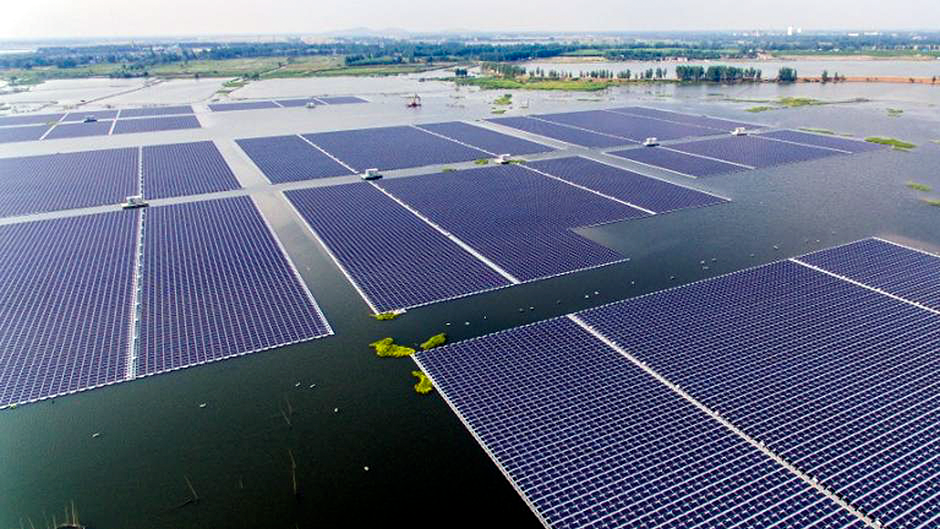
As of January 2022, the largest floating solar panel array in the world is located in Anhui Province, China. The floating solar array is situated on a flooded coal-mining town in Huainan, covering an area of approximately 166 hectares (410 acres). This massive floating solar farm has a capacity of 150 megawatts (MW) and consists of millions of photovoltaic panels installed on the surface of the water.
This floating solar array was developed by Sungrow Power Supply Co., Ltd., a Chinese company specializing in renewable energy solutions. The project demonstrates the potential of repurposing abandoned or unused land, such as flooded mining areas, for renewable energy generation. Additionally, the floating solar panels help to mitigate water evaporation, reduce algae growth, and provide renewable energy to support local electricity needs.
Global Scale
The global adoption of floating solar panel technology is rapidly expanding across various countries. Nations worldwide are increasingly embracing floatovoltaics as a viable solution for enhancing their solar energy generation capabilities. This trend reflects a growing recognition of the benefits associated with utilizing floating panels for renewable energy production.
Countries around the world are actively contributing to the growth of floatovoltaics on a global scale. Through innovative projects and initiatives, nations are playing a pivotal role in advancing the development of floating solar energy solutions. The widespread implementation of floating solar panel technology underscores its significance in driving sustainable energy practices globally.
Potential Impact
The deployment of floating solar panels carries significant environmental, economic, and social implications. By integrating floatovoltaics into existing energy infrastructure, there is a transformative impact on renewable energy generation and sustainability efforts. These projects have the potential to revolutionize how we harness clean energy sources while minimizing environmental impact.
The long-term implications of integrating floating solar panels into the energy landscape are profound. As these initiatives continue to evolve, they hold promise for reshaping the future of renewable energy production worldwide. The widespread adoption of floatovoltaics signifies a crucial step towards achieving sustainable energy goals on a global scale.
Emerging Trends in Floating Solar Technology
Innovations
Floating solar panels continue to revolutionize the renewable energy sector with their innovative technologies. Recent advancements have focused on enhancing efficiency and sustainability in solar energy generation. The integration of floating panels on water surfaces presents a promising solution for maximizing power output while conserving land resources.
Innovative designs now incorporate dual-axis tracking systems, allowing panels to adjust their orientation based on the sun's position. This dynamic feature significantly boosts electricity production by optimizing sunlight absorption throughout the day. Manufacturers are developing more durable materials to withstand harsh environmental conditions and ensure long-term performance reliability.
The use of floatovoltaics, a term referring to floating solar installations, is gaining traction worldwide as a cost-effective and environmentally friendly alternative to traditional land-based systems. These projects not only generate clean electricity but also contribute to water conservation efforts by reducing evaporation rates in reservoirs and lakes.
Key innovations include the implementation of hybrid platforms, which combine floating solar panels with complementary technologies such as wind turbines or wave energy converters. This integrated approach maximizes power generation potential by harnessing multiple renewable energy sources simultaneously. Furthermore, ongoing research focuses on minimizing the environmental impact of floating solar projects through advanced monitoring systems and eco-friendly construction practices.
Future of Floating Solar Panels
The floating solar panel industry has experienced rapid growth since 2016, with a surge in installations worldwide. This trend signifies a significant shift towards utilizing water bodies for solar energy generation. The market for floatovoltaics continues to expand, driven by the increasing demand for clean and renewable energy sources.
- Market trends indicate a promising future for floating solar projects, offering innovative solutions to meet the rising energy needs sustainably.
- The adoption of floatovoltaic systems is propelled by their ability to maximize sunlight exposure on water surfaces, enhancing energy generation efficiency.
- Despite the growth opportunities, challenges such as regulatory frameworks and technological limitations need to be addressed to ensure the sustainable development of floating solar panel installations.
The installation of the first floatovoltaic system (in Aichi, Japan) in 2007 marked a milestone in the technological advancements of floating solar panels. Over the years, continuous innovations have revolutionized the efficiency and performance of these systems. Breakthroughs in technology have significantly improved the capabilities of floatovoltaics, making them increasingly viable for large-scale deployment.
- Innovations like advanced anchoring mechanisms and weather-resistant materials have enhanced the durability and stability of floating solar panel structures.
- Ongoing research focuses on optimizing tracking systems and energy storage solutions to further increase the effectiveness of floatovoltaics.
- Prospects include integrating artificial intelligence and IoT technologies to monitor and optimize floating solar panel operations, maximizing energy output.
Exploring alternative materials for constructing floating solar panels is crucial for ensuring durability and sustainability. Lightweight yet robust materials are essential to withstand exposure to water and sunlight while maintaining structural integrity. Evaluating different materials based on their environmental impact is vital in promoting eco-friendly practices in solar energy generation.
- Utilizing corrosion-resistant materials like fiberglass-reinforced plastic (FRP) enhances the longevity of floating solar panel platforms.
- FRP platforms not only improve structural stability but also contribute to reducing carbon emissions through efficient energy production.
- Selecting materials that minimize environmental impact while maximizing performance is key to advancing sustainable practices in floatovoltaic installations.
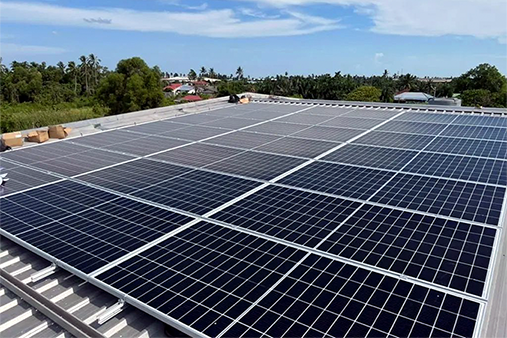 Implementing Fiberglass-reinforced Plastic (FRP) in rooftop solar panel structures on our very own factory in Telok Gong, Port Klang showcases our commitment to innovation and sustainability in clean energy production. By leveraging FRP platforms, we enhance the efficiency and longevity of solar modules while minimizing environmental footprint. We have been using rooftop solar photovoltaics since 2022, and we haven't had to perform any repairs on the FRP structures. This has given great testimonial that fiberglass-reinforced plastic is a highly durable material for solar modules, and it will also gonna work great for floating photovoltaic (FPV) platforms and structures.
Implementing Fiberglass-reinforced Plastic (FRP) in rooftop solar panel structures on our very own factory in Telok Gong, Port Klang showcases our commitment to innovation and sustainability in clean energy production. By leveraging FRP platforms, we enhance the efficiency and longevity of solar modules while minimizing environmental footprint. We have been using rooftop solar photovoltaics since 2022, and we haven't had to perform any repairs on the FRP structures. This has given great testimonial that fiberglass-reinforced plastic is a highly durable material for solar modules, and it will also gonna work great for floating photovoltaic (FPV) platforms and structures.
Summary
Floating solar panels have lots of benefits and are getting more popular. Big solar panel places show how great this tech is. Even though there are some problems, new ideas keep coming up to make floating solar better. By looking at big floating solar plants around the world, you can see how useful and good for the environment they are.
Floating solar panels are cool and help make clean energy. They save money, help the environment, and keep improving. Learn about new things happening with floating solar and see how you can help make the world greener with floating solar power.
Talk to us about your project today! WhatsApp or email – sales@muifatt.com.my
We guarantee our expertise to you.
Frequently Asked Questions
What are floating solar panels?
Floating solar panels are photovoltaic systems installed on bodies of water, such as lakes, reservoirs, or ponds. They harness solar energy to generate electricity while floating on the water's surface.
How do floating solar panels work?
Floating solar panels work similarly to traditional land-based solar panels by converting sunlight into electricity through photovoltaic cells. The key difference is that they float on water, which helps in cooling the panels and reducing energy loss.
What are the advantages of using floating solar panels?
- Utilize underutilized water surfaces
- Reduce water evaporation
- Improve energy production efficiency due to the cooling effect
- Offer potential for dual land-water use
- Can be installed near demand centers to reduce transmission losses
Are there any environmental benefits associated with floating solar panels?
Yes, floating solar panels have several environmental benefits:
- Reduced land usage and conservation of ecosystems
- Reduction in water evaporation from reservoirs
- Lower algae growth due to shading effect
- Potential for improved water quality in certain cases
What are some disadvantages of floating solar panels?
While floating solar panels offer many benefits, some disadvantages include:
- Higher installation costs compared to land-based systems
- Maintenance challenges due to exposure to water elements
- Limited locations suitable for installation based on water depth and conditions
Disclaimer:-
The information provided on this website is for general informational purposes only and does not constitute legal advice. While we strive to ensure the accuracy and reliability of the information provided, we make no representations or warranties of any kind, express or implied, about the completeness, accuracy, reliability, suitability, or availability concerning the information contained herein. Any reliance you place on such information is therefore strictly at your own risk. This website may contain links to other third-party websites. Such links are only for the convenience of the reader, user, or browser; which we do not warrant, recommend, endorse, or assume liability for the contents of the third-party sites.
Keep in touch with us should you be keen on receiving timely updates from us
- Website - https://www.muifatt.com.my/home/
- Facebook - https://www.facebook.com/muifattmarketing
- Instagram - https://www.instagram.com/muifattmarketing/
- Google - https://goo.gl/maps/WxVY13gNcaRTS7Jp6
- Youtube - http://www.youtube.com/@MuiFattMarketing
- TikTok - https://www.tiktok.com/@muifattmarketing
- LinkedIn - https://www.linkedin.com/company/mui-fatt-marketing-sdn-bhd-
- Linktree - https://linktr.ee/muifattmarketing
- Shopee - https://www.shopee.com.my/muifattmarketing
- Lazada - https://www.lazada.com.my/shop/mui-fatt-marketing
Recent Blog
Banishing Odor Woes in Wastewater Treatment Plants: Leveraging Fiberglass for Lasting Solutions
Discover how fiberglass solutions provide a sustainable and cost-effective method for odor control in Malaysian wastewater treatment plants, ensuring long-term operational efficiency and environmental stewardship.
Individual Septic Tanks: A Viable Solution for Rapid Housing Growth in Langat
Discover why individual septic tanks are an ideal solution for new housing developments in areas underserved by the Langat Centralized Sewage Treatment Plant. Learn about their benefits, installation process, and environmental impact.
FRP Panel Water Tanks in Data Center Cooling System
Data centers require robust and efficient cooling systems to maintain optimal performance. Fiberglass-Reinforced Plastic (FRP) panel water tanks play a crucial role in these systems by providing durable and efficient water storage solutions. This article explores the benefits of FRP panel water tanks, their importance in data center cooling, and addresses frequently asked questions.
Upgrade Wetland Infrastructure with Durable FRP Solutions
Explore the wonders of wetlands and learn about the importance of conservation efforts. Discover how Mui Fatt specializes in manufacturing high-quality FRP solutions tailored for wetland infrastructure, ensuring durability, sustainability, and lasting protection for these vital ecosystems.
Efficient FRP Insights in Wastewater Treatment
Explore the transformative impact of Fiberglass-Reinforced Plastic (FRP) technology in wastewater treatment plants. Discover how FRP has revolutionized plant infrastructure, addressing challenges such as corrosion and rising material costs. Learn why FRP is the material of choice for sustainable, cost-effective, and efficient water management solutions. Dive into future potential to understand why FRP is shaping the future of wastewater treatment.
The Definitive Guide to Acquiring FRP Panel Tanks: A Step-by-Step Process Flow
Discover the step-by-step process of acquiring high-quality FRP panel tanks with this comprehensive guide. Learn how to assess your requirements, research suppliers, customize your tank, and more. Trust us for expert advice and reliable FRP solutions.
Comparing FRP Handlay, SMC, and Pressed Steel Panel Tanks: Which Is Best for Your Needs?
Explore the pros and cons of FRP Handlay, SMC, and Pressed Steel Panel Tanks in this comprehensive comparison guide. From durability to maintenance requirements, discover which tank type suits your industrial or commercial needs best!








